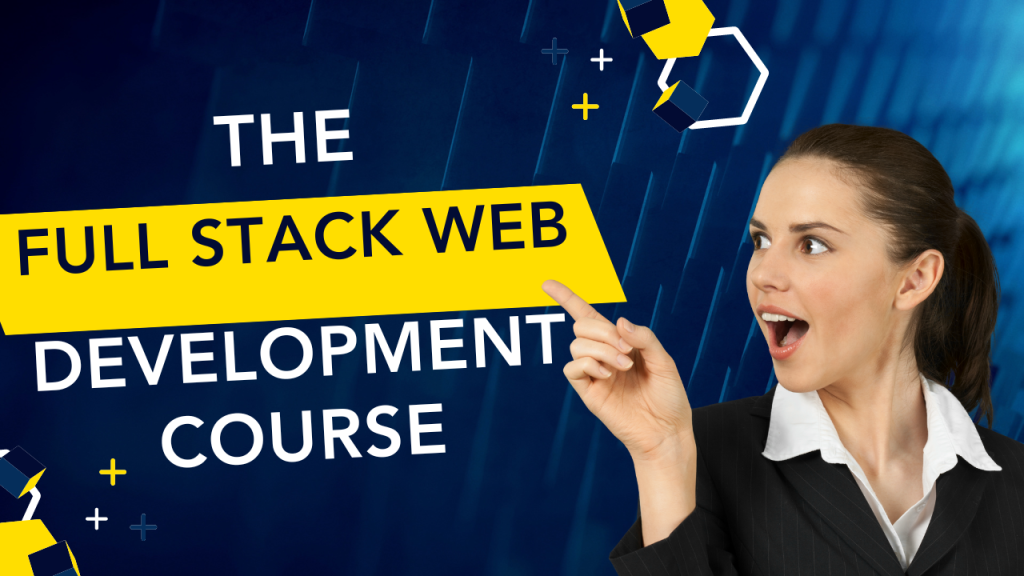Full Stack Web Development in 2023: The Ultimate Guide
The digital landscape is ever-evolving, and with it, the demand for skilled web developers continues to rise. As we step into 2023, the realm of full stack web development has expanded, offering a plethora of opportunities for aspiring developers and businesses alike. If you’re considering diving into this dynamic field, this guide is tailor-made for you. Let’s embark on a journey to understand the nuances of full stack web development in 2023.
1. What is Full Stack Web Development?
Full stack web development refers to the comprehensive process of developing both the front-end (client-side) and back-end (server-side) of a web application. A full stack developer possesses the expertise to work with databases, servers, systems engineering, and clients. They are the jack-of-all-trades in the web development world, capable of creating an entire web application from scratch.
2. Why Choose a Full Stack Web Development Course in 2023?
- Holistic Learning: Instead of focusing on just one aspect of web development, you’ll gain a holistic understanding of the entire development process.
- Increased Job Opportunities: With the digital transformation wave, companies are on the lookout for developers with diverse skill sets. Being proficient in both front-end and back-end technologies makes you a valuable asset.
- Flexibility: Whether it’s working on user interfaces or server-side logic, you’ll have the flexibility to work on various parts of a project.
3. Key Components of Full Stack Web Development
Front-end Development:
This deals with the visual aspects of the web application that users interact with. Key technologies include:
- HTML: The backbone of web pages.
- CSS: Styles and beautifies web pages.
- JavaScript: Adds interactivity to web pages. Frameworks like React and Angular enhance the capabilities of vanilla JavaScript.
Back-end Development:
This is the server-side of the application, responsible for managing data and ensuring everything on the client-side runs smoothly. Key technologies include:
- Node.js: A runtime environment that lets you execute JavaScript on the server-side.
- Databases: Systems like MongoDB or SQL databases store and retrieve data.
- Server: Systems like Apache or Nginx serve your web applications to users.
4. Top Full Stack Web Development Courses in 2023
- The Complete 2023 Web Development Bootcamp on Udemy: A comprehensive course that covers everything from the basics to advanced concepts.
- Full Stack Web Development Courses on Coursera: Coursera offers a range of courses from top universities and institutions. For instance, the “IBM Full Stack Software Developer” course covers essential skills like Web Development, Cloud Computing, and more.
- The Complete Web Developer in 2023: Zero to Mastery on Udemy: This course promises to transform you from a beginner to a professional developer, covering the most in-demand skills.
5. Practical Tips for Aspiring Full Stack Developers
- Continuous Learning: The tech world is fast-paced. Always stay updated with the latest trends and technologies.
- Build Projects: Theory is essential, but practical experience is invaluable. Build your projects to apply what you’ve learned and showcase them in your portfolio.
- Networking: Join web development communities online and offline. Engage in discussions, attend workshops, and connect with experienced developers.
Conclusion
Full stack web development is an exciting and rewarding field, offering endless opportunities for growth and innovation. As the digital world continues to expand, the demand for skilled full stack developers will only increase. By equipping yourself with the right skills and knowledge, you’ll be well on your way to a successful career in this dynamic domain.
Whether you’re a beginner looking to start your journey or a seasoned developer aiming to update your skills, 2023 is a promising year for full stack web development. Dive into a course, immerse yourself in learning, and watch as doors of opportunity swing wide open for you.
Note: Always ensure to check the course curriculum, reviews, and ratings before enrolling. It’s essential to choose a course that aligns with your learning goals and offers practical, hands-on experience.
